Why the Mohu Leaf Is (Still) My Favorite Indoor Antenna
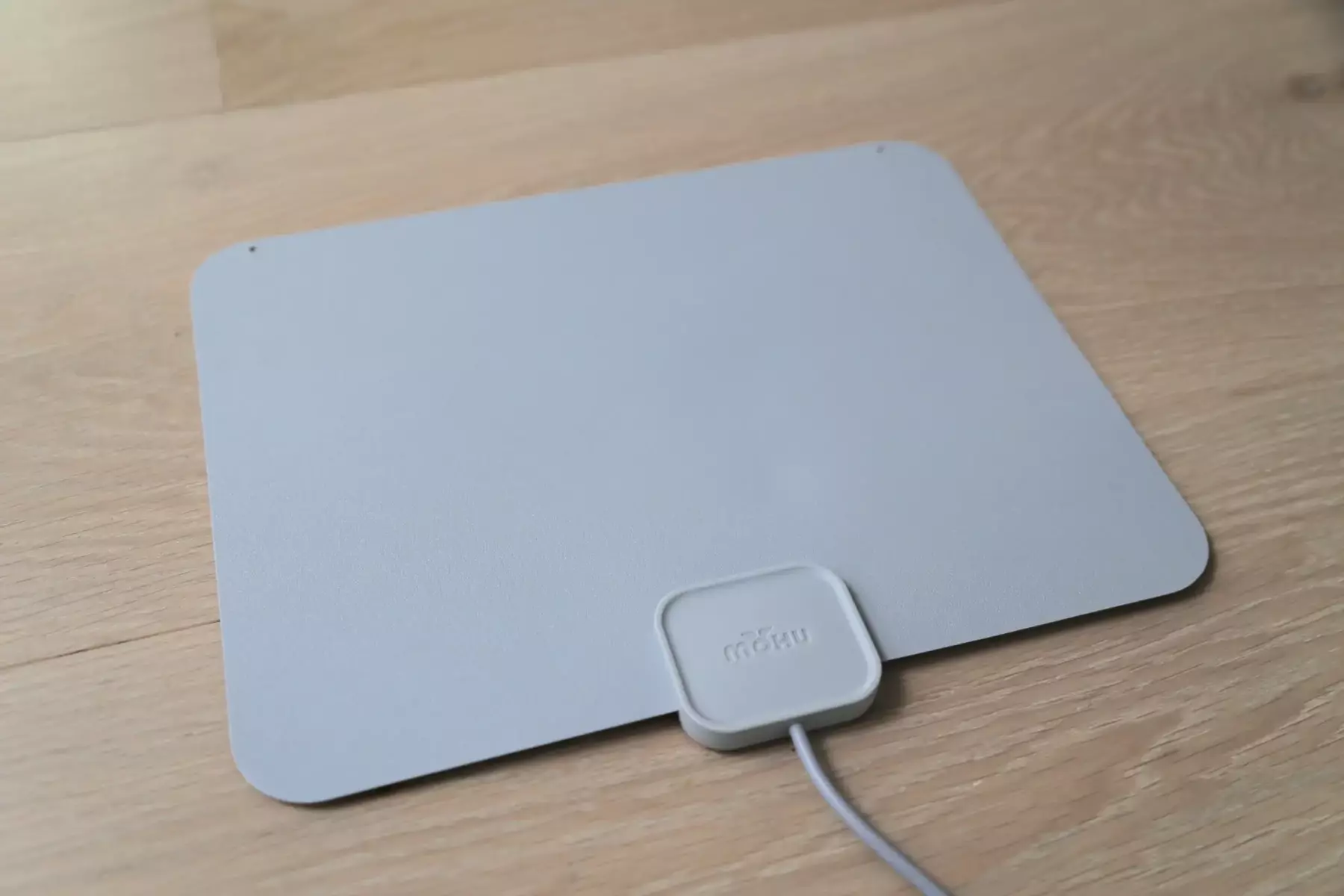
The Mohu Leaf was a revolutionary, nearly paper-thin, antenna that set it apart from the bulky metal antennas of the time. To give you an idea, Here is a photo of a big DB4 metal antenna next to the original laminated Mohu Leaf on the right:
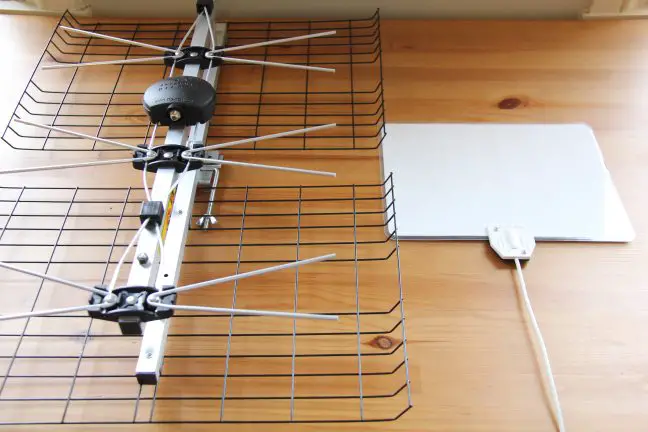
Judging by size, you would guess that the big antenna on the left would pick up more channels than the one on the right, right? When I tested them, however, I was blown away at the results!
Testing the Leaf
I tested two Mohu Leaf models, the unamplified Leaf 30 and the amplified Leaf 50, attached to a 46″ Sony TV. How could these compete with a big bulky antenna many times its size? For reference, I also tested an old-school “rabbit ear” antenna.
I picked four different locations in my apartment to give a variety of results under different signal conditions. Here are the number of channels that each antenna “found” in each of the four locations (a bigger number is better!):
| Location | Rabbit Ear | DB4 | Mohu Leaf | Amplified Leaf |
|---|---|---|---|---|
| #1 | 16 | 30 | 29 | 32 |
| #2 | 4 | 5 | 18 | 11 |
| #3 | 8 | 10 | 10 | 10 |
| #4 | 17 | 16 | 28 | 30 |
As you can see, there is quite a variation in performance based on signal conditions. In locations 1 and 3, the three antennas performed about the same. Although the Mohu Leaf 50 “won” in two locations, statistically these can be considered a tie.
The Results
I was blown away that the thin Mohu Leaf 30 found more channels on average than a bulky metal antenna! How could that be? Well, in Providence, RI, where I did this test, the TV signals come from almost all directions. The DB4 is good at receiving signals from only a narrow angle. It has a reflector in the back which blocks signals from that direction. The Mohu Leaf, on the other hand, is better at getting signals from all directions.
You might also be wondering why the unamplified Mohu Leaf beat the amplified Mohu Leaf 50 so handily in location #2. In general, when the antenna is indoor and the cable run to the antenna is short, amplification doesn’t give much benefit. In fact, if strong TV signals are present, a powered antenna can actually over-amplify the signal and distort the weaker channels which are part of the same signal.
I confirmed these conclusions with an antenna engineer that I talked to. Also, if you read reviews online, you’ll see that many people see no improvement with an amplified indoor antenna.
I also tried an old-school rabbit ear antenna and confirmed that it was the worst. If you have one of these already, give it a try; you’ll probably get some channels. But, you could get more if you use a better antenna.
The Modern Mohu Leaf
The design of the Mohu Leaf has changed over the years. It used to be white, then white on one side and black on the other. Now it’s grey.
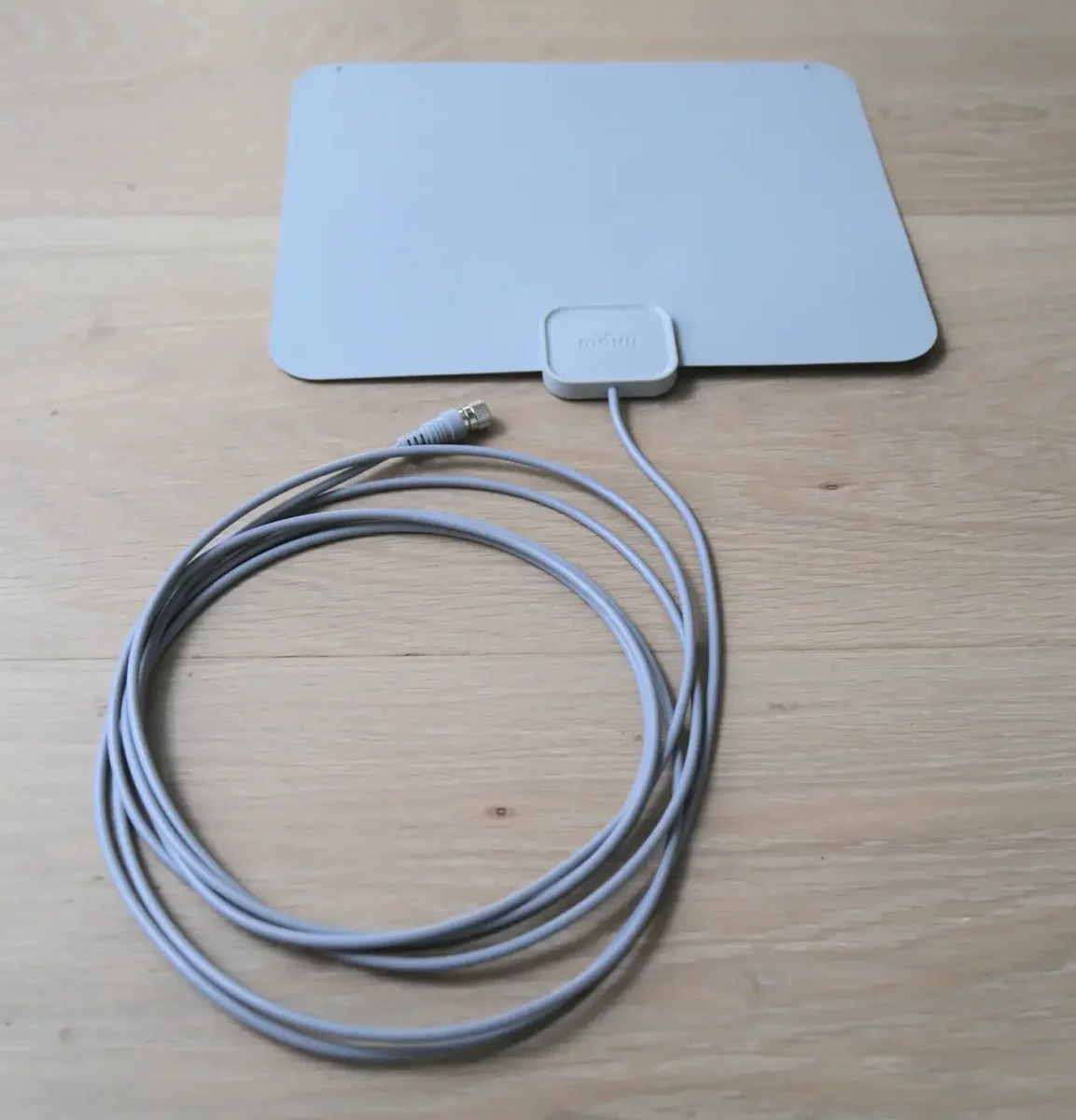
One more significant thing that has changed over the years is how the cable attaches to the antenna. The Mohu Leaf started out with the cable permanently attached. The next versions had a detachable cable. I actually preferred that because it enabled me to use an upgraded RG6 cable, AND choose what length of cable I needed, whether that was longer or shorter than what Mohu provided.
Now, the Leaf is back to having a permanently attached 12-foot-long cable. I was curious if this would hinder performance, so I tested the new Leaf against my old one which had an upgraded RG6 cable attached.
Testing the Old vs. New Leaf
I picked a spot on my window and ran tests on the old Leaf (using my Tablo Gen 4 as my tuner), then I removed it and placed the new Leaf in the exact same spot. To my surprise, the new Mohu Leaf, even with the thinner cable, got more channels! Over multiple channel scans, the old Leaf with RG6 coax cable picked up an average of 146.5 channels, while the new Leaf picked up an average of 151.4 channels in my testing in Los Angeles, California.
More importantly, some of the channels that the new Leaf picked up were major networks that the old Leaf didn’t get! These were actual channels that mattered, not just odd foreign-language channels! This was a big “win” for the new Leaf!
Why the New Leaf is Better
When I held up the new Leaf to the light, I could see a silhouette of the antenna elements. The new antenna shape is different from the shape in the old Mohu Leaf, which I saw when I gutted one of mine some years ago.
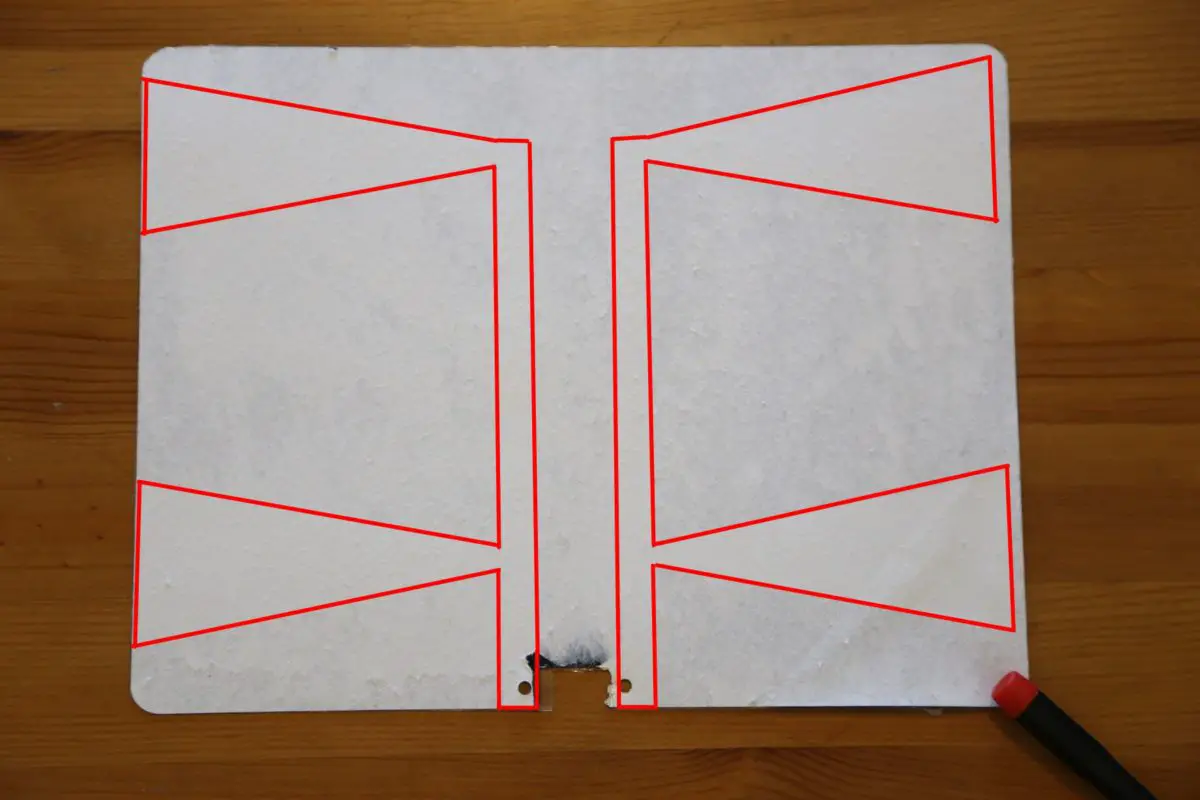
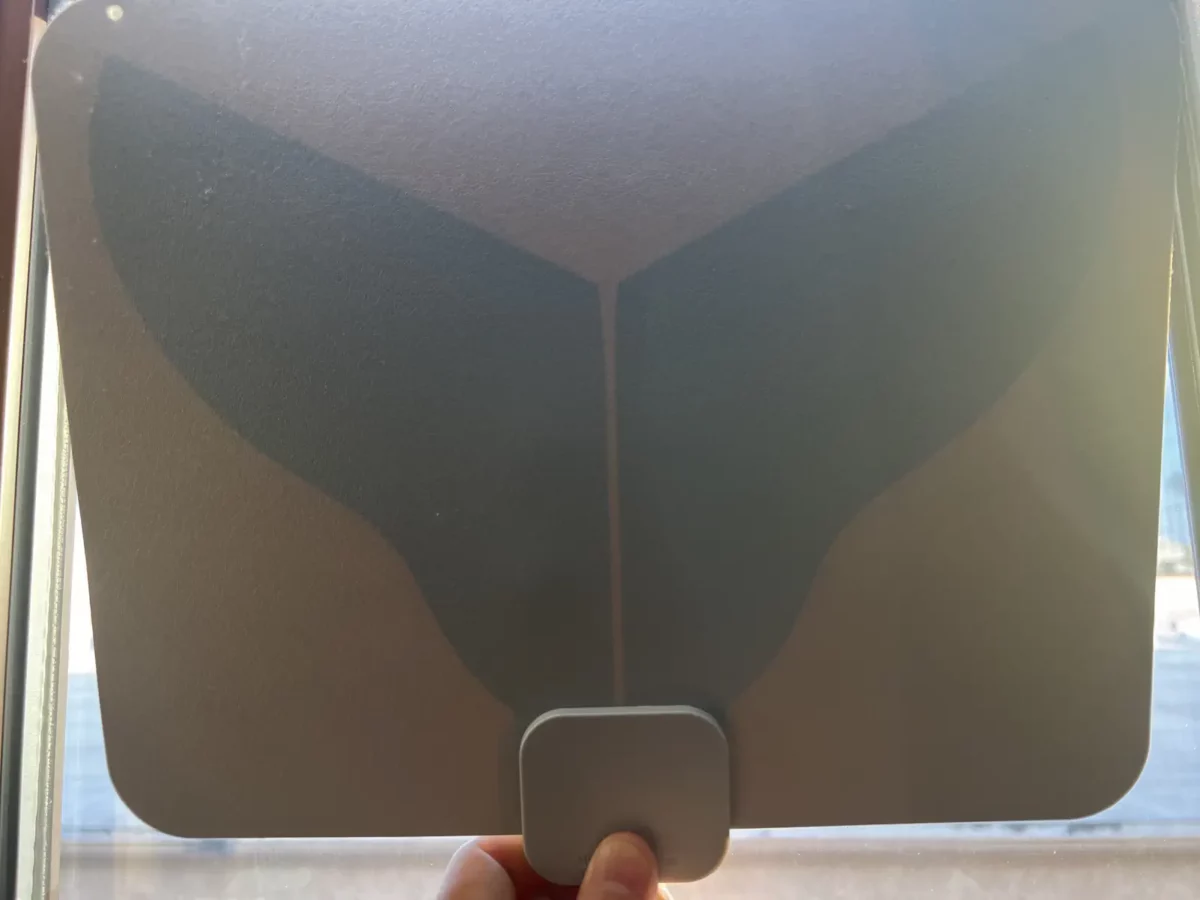
I can only assume that the Mohu engineers have refined and improved the antenna shape over the years, and that is why the new Leaf gets more channels, even with a longer and thinner cable!
What About Outdoor Antennas?
There’s no question that you’ll get the best reception and most channels by using an outdoor antenna versus an indoor one, even the Mohu Leaf. There’s no substitute for being higher up and having no walls between the antenna and the transmission towers.
However, for folks who can’t have an outdoor antenna (i.e., if you’re renting, etc.) the Mohu Leaf is the best indoor antenna I’ve found!
The Winner
So, to sum up, if you’re looking for an indoor antenna I would recommend the current unamplified Mohu Leaf for most people who live in areas with moderate to strong TV signals (i.e., most big cities).
Before buying anything though, please enter your zip code into the Station Finder to make sure there are channels in your area. If you live in a big city, you should be fine. If you don’t see a lot of channels, your best bet is to get an outdoor antenna.
Conclusion
After testing the Mohu Leaf over many years now, I haven’t found a better indoor antenna. The Mohu Leaf is STILL my favorite indoor antenna!! – Brian
Disclosure: Some of the links on this page are affiliate links. This means if you click on the link and purchase the item, I will receive an affiliate commission at no extra cost to you. I test or research each product or service before endorsing. This site is not owned by any retailer or manufacturer. I own this site and the opinions expressed here are mine. As an Amazon Associate, I earn from qualifying purchases.
Keep in Touch – Subscribe for Free
If you liked this article, please sign up for email updates. I’ll send you a note when I publish a new article, no more than once every few months. Unsubscribe any time. – Brian


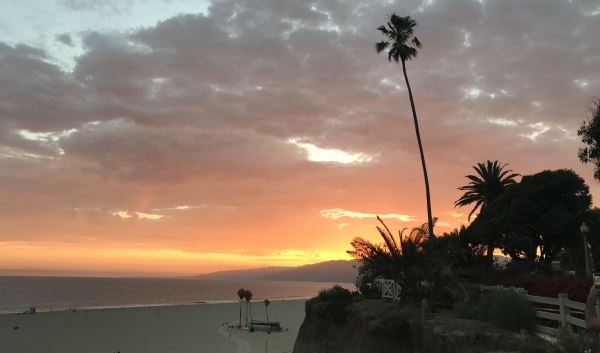
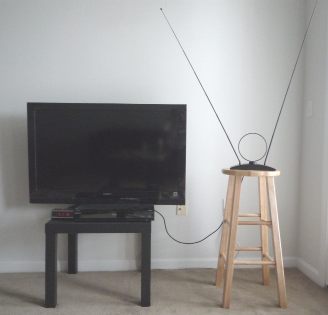
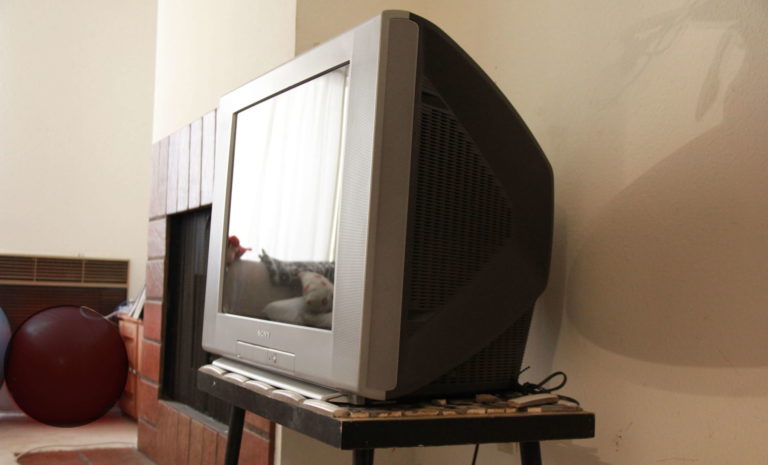

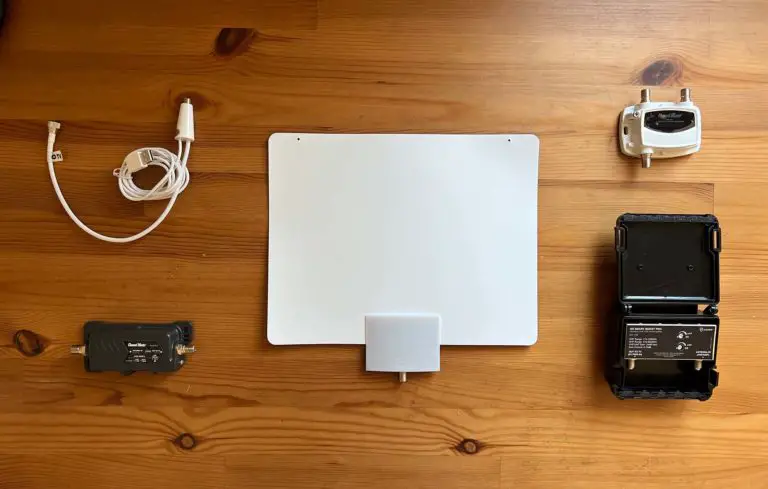
Living in Fairfield County, CT I found no indoor antenna will work well. Live near one NBC station in New Haven, CT and all the rest are in NYC about 60 miles away. Fortunately, I live on top of a 650 mountain with just trees blocking the view to NYC. With an outdoor antenna on a 50-foot pole, at the top of the tree line, I can get from NYC CBS, ABC, CW. With NBC in New Haven that gives me all four of the major networks, and I get some PBS and additional low-definition stations as well. It is not perfect, but it works well enough, and I use that with a few streaming services to meet my needs.
Hi Sam,
Thanks for sharing! Yeah, there’s no way an indoor antenna (or even an attic antenna) would work at 60 miles. That’s amazing that you were able to get that 50-foot pole going! Impressive!!
Brian
Brian, I also learned about the noise boosting of amplified antennas. As to the MOHU LEAF (btw BestBuy seems to only carry the amplified variety), there is one thing I think you didn’t mention: is it directional or multidirectional? I learned that “more,’ just like “amplified,” “multidirectional” is not necessarily better. Why? Because you can easily tweak a directional antenna to get any station in your vicinity. With a multidirectional antenna, you do not have the option of “tweaking” — reception is what it is. No possibility of improvement.
Hi Wolf,
Yes very good points! I would say the most accurate way to describe the Mohu Leav is “bidirectional”. It works best when the flat surface is pointed at the tower, although it will work in other directions, just not as well.
Best,
Brian
Which side of the Mleaf antenna should be facing outside?
It doesn’t matter. The actual antenna is in the center of the plastic “sandwich”.
Best,
Brian
Can you connect other Smart TVs wirelessly?
Hi David,
In order to do watch broadcast TV on multiple TVs using one antenna, you could use a DVR such as the Tablo or Air TV. More here:
https://www.disablemycable.com/dvr/
Best,
Brian
Thanks!
Is it possible that the area I live in does not have signal to use an antenna? Is there a way that I can check based on zip code?
Hi Whit, yes absolutely! Enter your zip code into the Station Finder:
https://www.disablemycable.com/station-finder/
Best,
Brian
I read your article with much interest. I am happy enough with the stations I pick up living in Providence with my antenna. Last night the Patriots game was only on the NFL Network and local TV in Boston. I generally don’t pick up Boston stations which are 35 to 40 miles away. For some reason I decided to look up the digital number for WBZ, plug the number into my TV and was astonished to find the Patriot game was on. Now without even reprogramming my TV, WBZ is automatically on it now. I guess my question is how come I can’t pick up other Boston stations whose towers aren’t that much further and seem to be putting out the same signal as WBZ. If you still live in Providence are you able to pick up Boston stations with your Mohu Leaf 30 ? Thanks
Hi Antwan,
Thanks for sharing! I don’t live in Providence anymore, but when I did, I was indeed able to pick up some Boston stations with my Mohu Leaf.
Reception depends on many factors including distance and transmission power as you said. But another big factor is what frequency they transmit on. Generally, the higher frequencies (UHF) are easier to pick up using the Leaf than the lower ones (VHF). Another factor is electronic interference. Finally, there could be an obstacle between you and the other towers.
But, keep experimenting! You never know what you’ll be able to get. Congrats on getting the Patriots game!
Best,
Brian
I’m a little surprised that RG-6 helps over RG-59, over very short runs. Usually RG-6 is better for low loss over very long runs.
I used your test tip with RG-59 and a pair of aligator wired clips to the electrical cord on a lasko fan sitting on the floor of my 2nd floor apt. to find over 70 channels.
Wondering if the un-amped Leaf would improve this? I doubt after this test above that I would need a amped version -that may only over-amp, or amp noise too and be worse.
With your EE background, maybe do a test of how to MAKE your own simple multi-directional antenna?
Speaking of multi-directional antennas, I find it hard to get this detail explicitly advertised for many amazon antennas.
Hi,
Based on getting 70 channels, I think an un-amped Leaf would be better than amped.
Yeah, it’s hard to make a truly multi-directional antenna that’s really good. If I find one, I’ll let you know.
Thanks,
Brian
i wonder why we need to pay for cable tv shows when the tv shows are aired free..
what kind of antenna does these cable tv suppliers use that ordinary people can’t use?
where can we buy those antennaes?
Hi Jim,
Unfortunately, many of the channels on cable TV other than the networks and local stations are not broadcast to the masses. There’s no way to get those using an antenna.
There are, however, some great free streaming services that you can watch using a Roku or smart TV:
https://www.disablemycable.com/streaming-services/
Best,
Brian
I think this was about broadcast channels over cable, for which my spectrum provider surcharges $18/mo.
This should be illegal. We should not have to pay extra for these over cable, especially if we do not want or watch them. At one time I recall you could get just these free (per FCC regs) over the local cable provider if your location was in a map dead zone for over the air signals.
Hi,
Thanks for sharing – agreed!
Brian